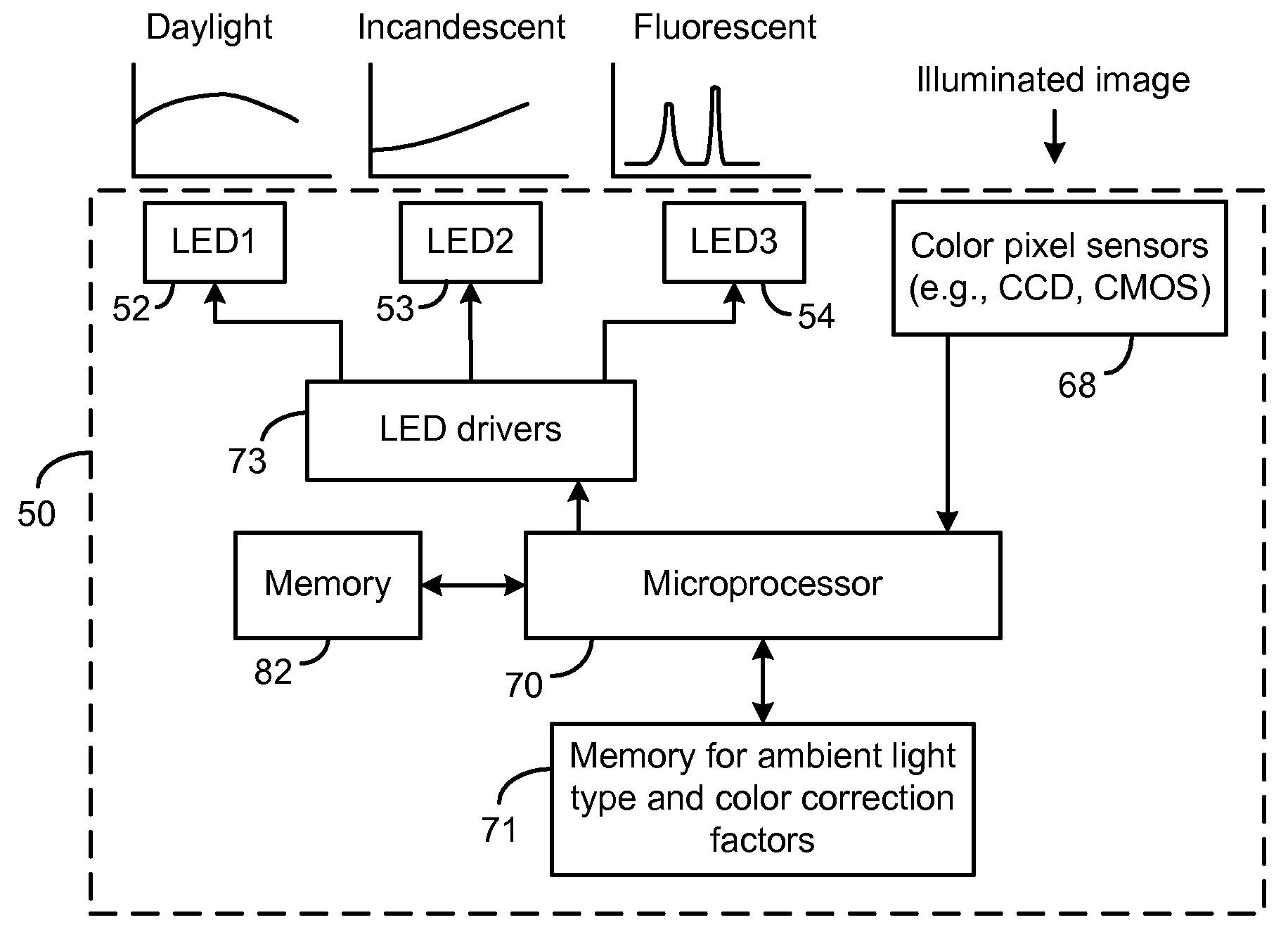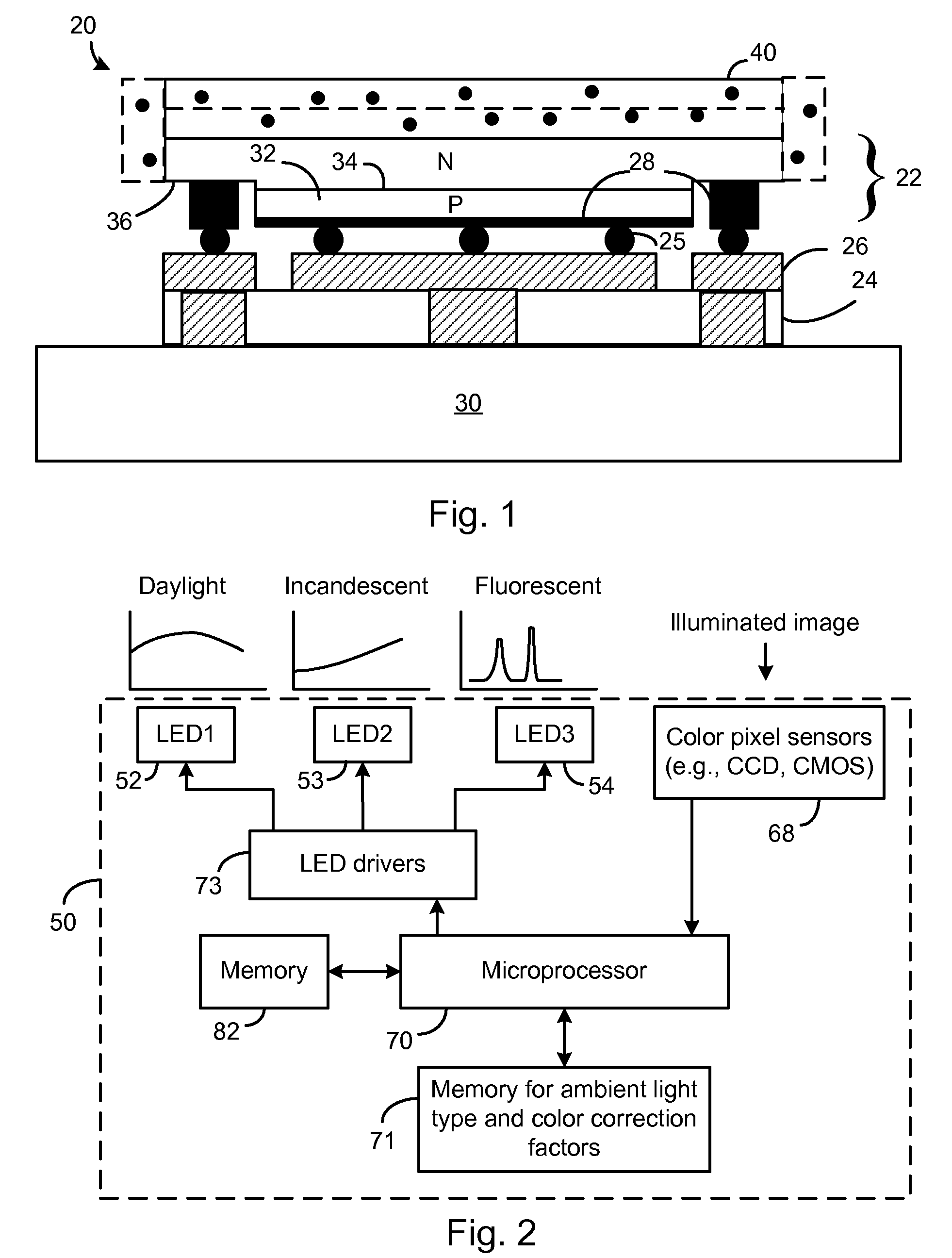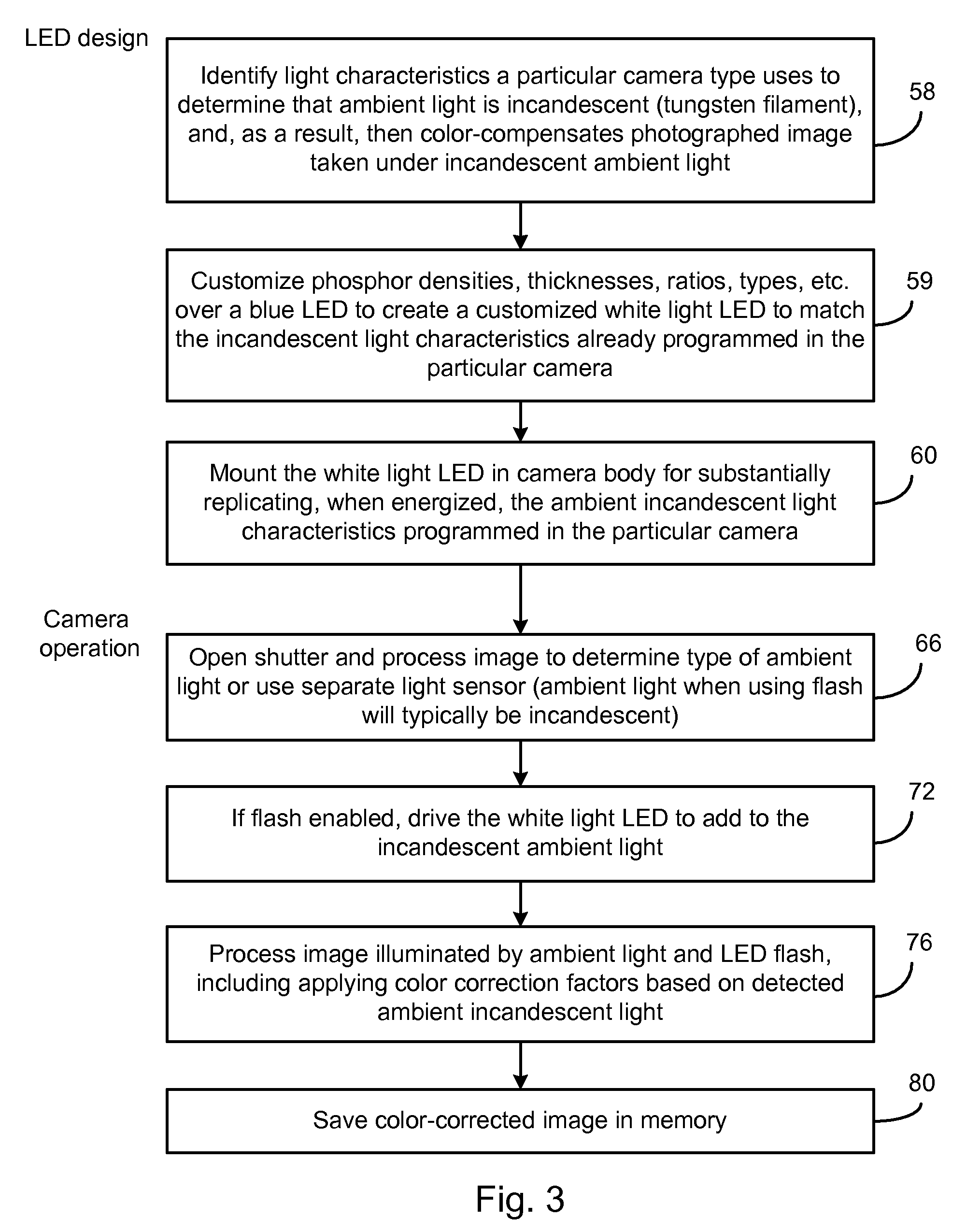Matching LED flash to camera's ambient light compensation algorithm
- Summary
- Abstract
- Description
- Claims
- Application Information
AI Technical Summary
Benefits of technology
Problems solved by technology
Method used
Image
Examples
Embodiment Construction
[0022]An LED flash is fabricated for a particular camera using an LED die and phosphors over the die to produce a white light whose light characteristics are customized to substantially match one of the ambient light settings programmed into the camera. Each camera manufacturer may have their own standard for an ambient light type (e.g., incandescent light is 2500K vs. 3000K), so the LED flash is customized to substantially match one of the existing ambient light criteria for the camera.
[0023]The inventor has performed tests (using a color chart and the delta E94 standard) comparing color errors for different color temperatures of ambient light. The inventor has found that, when the camera is set to use its incandescent light (tungsten filament) color correction algorithm, the lowest color error is produced when the LED flash is customized to substantially emit the same color temperature (about 2700K) as the tungsten filament. The test also showed that the highest color error is pro...
PUM
 Login to View More
Login to View More Abstract
Description
Claims
Application Information
 Login to View More
Login to View More - R&D
- Intellectual Property
- Life Sciences
- Materials
- Tech Scout
- Unparalleled Data Quality
- Higher Quality Content
- 60% Fewer Hallucinations
Browse by: Latest US Patents, China's latest patents, Technical Efficacy Thesaurus, Application Domain, Technology Topic, Popular Technical Reports.
© 2025 PatSnap. All rights reserved.Legal|Privacy policy|Modern Slavery Act Transparency Statement|Sitemap|About US| Contact US: help@patsnap.com



